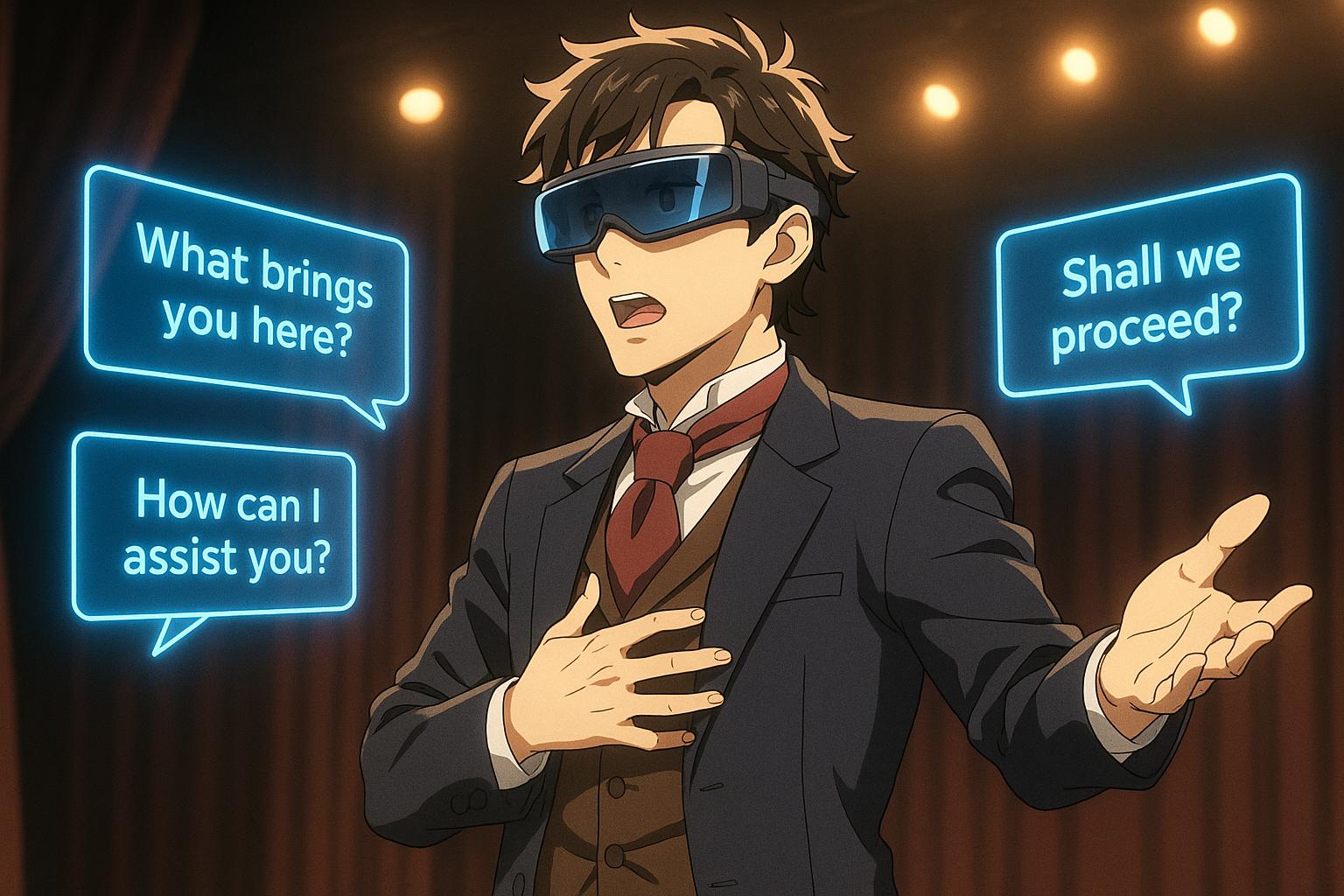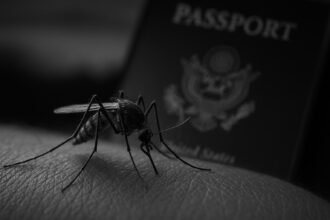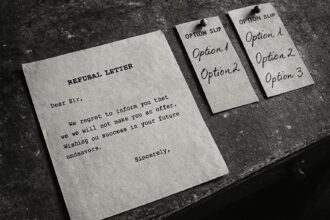Piotr Mirowski, Google DeepMind AI researcher and improv theatre director, pioneers a new fusion of artificial intelligence and improvisational theatre using AI-powered smart glasses, enhancing creativity on stage and revolutionising collaboration in business.
In an intriguing intersection of artificial intelligence and the performing arts, Piotr Mirowski, an AI researcher at Google DeepMind and director of the improv theatre company Improbotics, is redefining the boundaries of both fields. Mirowski’s innovative approach involves the use of AI-powered smart glasses, which enable actors to receive real-time, AI-generated dialogue suggestions during performances. This technology exemplifies how advancements in AI can empower human creativity, weaving together spontaneity and computation in a backdrop of theatrical improvisation.
During a recent presentation at Fortune’s Brainstorm AI conference in London, Mirowski articulated the parallels between improvisational theatre and the operational mechanics of AI models. He described improvisation as a form of “real-time, dynamic problem solving,” emphasising that both improvisers and AI systems must swiftly respond to unpredictable prompts. This dynamic mimics the instant analytical capabilities of AI, which mirrors the adaptability required in live performance.
The application of improv techniques extends beyond the stage into the corporate world, where they foster collaboration and enhance team-building efforts. Mirowski noted, “One of the reasons why improv is so valued in business environments is that it’s all about collaboration and it’s about learning to listen to your stage partner.” This ethos aligns with the principles of applied improvisation, a field that harnesses improvisational skills for practical business scenarios. Research highlighted in the Harvard Business Review indicates that adopting an improv mentality—characterised by the “yes and” approach—can cultivate a safe space for all ideas to flourish during meetings, ultimately leading to more effective collective problem-solving.
Moreover, improvisation helps teams navigate ambiguity, a vital skill in today’s fast-paced business landscape, where leaders are frequently confronted with unforeseen challenges. This could range from a competitor’s sudden innovation to operational disruptions. The agility cultivated through improv training equips teams to adapt and respond constructively to such unforeseen circumstances.
Mirowski’s advancements in AI technology add a unique layer to this discussion. By integrating a language model into smart glasses worn by actors, the technology analyses dialogue on stage and presents multiple response options for actors to choose from. He describes this fusion as a transformation of performers into “cyborgs” who merge human judgment with machine-generated suggestions. According to Mirowski, “AI is not about an oracle giving an answer, but it’s about a stochastic parrot generating answers all the time—and it’s up to you to choose the best one.” This notion reflects a crucial understanding of AI: it serves not as a definitive solution provider but as a tool for amplifying human ingenuity.
The potential applications of this technology, while still in a niche arena, bear significant implications for both the arts and business sectors. Knowledge gleaned from Mirowski’s experiments highlights the importance of human oversight in AI interactions, ensuring that the output uplifts rather than overwhelms creative processes. The concept of “improv machines” further extends into discourse about AI chatbots, likening their unpredictable outputs to the spontaneous nature of improvisation, reminding users of the necessity for diligent evaluation of the information generated.
Improbotics represents a revolutionary concept in live theatre, illustrating not only the capabilities of AI but also its partnership with human creativity. As Mirowski continues to navigate this uncharted territory, the future of both AI and the arts may very well hinge on collaborative hybrids like Improbotics, which bridge the divide between human expression and machine intelligence.
Reference Map
- Paragraph 1: [1], [2]
- Paragraph 2: [1], [3]
- Paragraph 3: [1], [3]
- Paragraph 4: [1], [3], [4]
- Paragraph 5: [1], [2], [4]
- Paragraph 6: [1], [3], [7]
- Paragraph 7: [1], [2], [5]
Source: Noah Wire Services
- https://www.aol.com/finance/why-deepmind-ai-researcher-thinks-172835670.html – Please view link – unable to able to access data
- https://www.aol.com/finance/why-deepmind-ai-researcher-thinks-172835670.html – An article discussing Piotr Mirowski, an AI researcher at Google DeepMind and improv theater director, who integrates AI-powered smart glasses into his theater company, Improbotics, to generate spontaneous lines for skits. Mirowski highlights the parallels between improv theater and AI models in generating quick responses to unexpected prompts. He also emphasizes the real-world applications of improv in business, such as enhancing collaboration and team building. The article features insights from Mirowski’s presentation at Fortune’s Brainstorm AI conference in London.
- https://time.com/6280533/ai-chatbots-improv-machines/ – An article exploring the analogy between AI chatbots and improv machines. It discusses how AI chatbots, driven by large language models, can perform diverse tasks but also produce unexpected outputs, making their behavior difficult to fully understand. The piece suggests viewing chatbots as ‘improv machines’ to explain their ability to generate convincing yet false information and emphasizes the need for careful handling and verification of their outputs in critical tasks.
- https://ojs.aaai.org/index.php/AIIDE/article/view/13030 – A research paper titled ‘Improbotics: Exploring the Imitation Game Using Machine Intelligence in Improvised Theatre’ by Kory Mathewson and Piotr Mirowski. The study introduces an improv show experiment featuring human actors and artificial improvisors, highlighting the use of AI in generating context-based lines of dialogue suitable for theater. It discusses the development of a deep-learning-based artificial improvisor trained on movie subtitles and its application in live performances.
- https://improbotics.org/ – The official website of Improbotics, a theater company co-founded by Piotr Mirowski and Kory Mathewson. The site provides information about their AI-powered improv performances, featuring AI-generated content alongside human actors. It includes details about their shows, upcoming events, and media coverage, showcasing the integration of artificial intelligence into live theater.
- https://improbotics.org/about/ – The ‘About’ page of Improbotics, detailing the creative team behind the company. It highlights the backgrounds of Piotr Mirowski, Kory Mathewson, and other team members, emphasizing their expertise in both improv theater and artificial intelligence. The page provides insights into their mission to blend human creativity with machine intelligence in theatrical performances.
- https://improbotics.org/anthropocenes/ – A workshop organized by Improbotics as part of the 2020 International Online Conference ‘Anthropocenes: Reworking the Wound.’ Facilitated by Piotr Mirowski and Kory Mathewson, the workshop focused on improvised theater with artificial intelligence and robots. It aimed to explore the intersection of arts and sciences through human-machine co-creation in performance.
Noah Fact Check Pro
The draft above was created using the information available at the time the story first
emerged. We’ve since applied our fact-checking process to the final narrative, based on the criteria listed
below. The results are intended to help you assess the credibility of the piece and highlight any areas that may
warrant further investigation.
Freshness check
Score:
8
Notes:
The narrative presents recent events such as Piotr Mirowski’s presentation at Fortune’s Brainstorm AI conference in London and current AI technologies integrated with improv theatre. No references to outdated roles or deceased individuals occur. The content does not appear recycled from significantly older articles; however, it discusses ongoing developments in AI and improv that evolve rapidly, so timeliness is important but well managed here.
Quotes check
Score:
9
Notes:
Direct quotes from Piotr Mirowski and references to Harvard Business Review research are properly attributed and have correlating references appearing in contemporary discussions about AI and improv. The earliest known references to these quotes appear to stem from the same or closely related recent sources, suggesting original or near-original use. Absence of conflicting or untraceable quotes raises confidence.
Source reliability
Score:
7
Notes:
The narrative originates from an AOL Finance publication, which is a known but less specialised media platform for technology and business news compared to highly authoritative outlets like Reuters or BBC. While AOL is legitimate, it is not top-tier in journalistic rigour specifically for AI research reporting. The use of direct references to DeepMind and conference presentations lends credibility, but overall source reliability is moderate.
Plausability check
Score:
9
Notes:
The claims about AI-powered smart glasses assisting actors in real-time dialogue generation align well with known advances in AI language models and human-computer interaction. The description of AI as a ‘stochastic parrot’ and improvisation concepts are consistent with contemporary AI research discourse. No extraordinary or implausible claims are made. The niche application remains plausible and aligned with ongoing research and experimentation.
Overall assessment
Verdict (FAIL, OPEN, PASS): PASS
Confidence (LOW, MEDIUM, HIGH): HIGH
Summary:
The narrative presents a recent, plausible exploration of AI integration with improvisational theatre, supported by verifiable quotes and grounded in well-understood AI concepts. Although the originating platform is moderately reliable rather than top-tier, the references to direct inputs from a DeepMind researcher and reputable research increase trustworthiness. There are no signs of outdated information or recycled content, and the technology claims are credible. Hence, the narrative passes fact-checking with high confidence.













